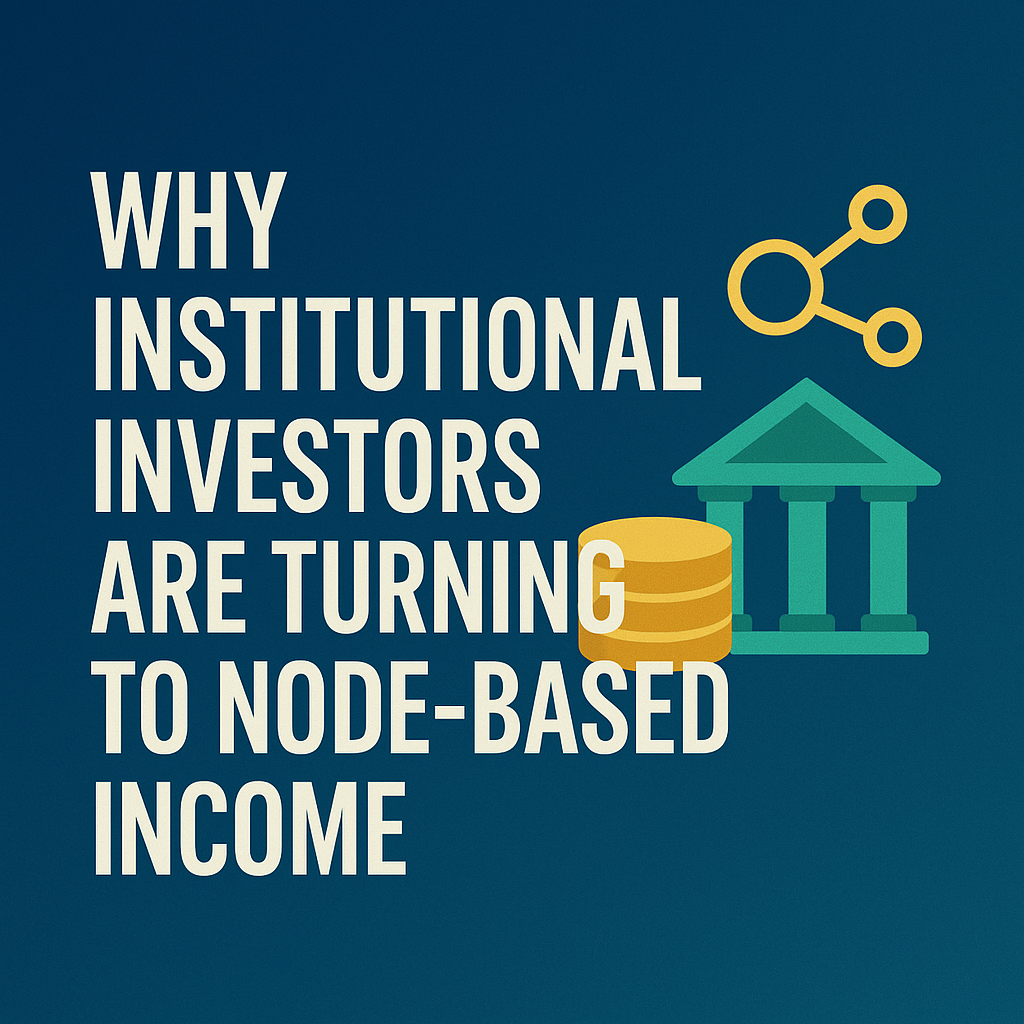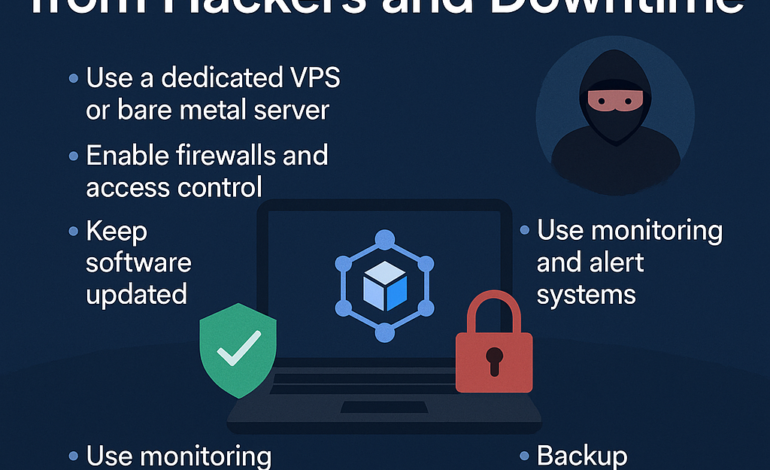As blockchain technology matures, it’s not just tech-savvy individuals exploring its potential — institutional investors are now stepping into the decentralized world with serious interest. One area gaining rapid traction among these big players is node-based income. But what makes running blockchain nodes so attractive to institutional investors in 2025?

What Is Node-Based Income?
Node-based income refers to passive earnings generated by operating blockchain nodes — systems that verify transactions, store data, or help maintain decentralized networks. In exchange, node operators earn crypto rewards, often in the form of native tokens or other digital assets.
There are several types of nodes:
- Validator Nodes: Secure Proof-of-Stake (PoS) networks
- Masternodes: Offer advanced services like governance and faster transactions
- Data/Oracle Nodes: Feed external data to smart contracts (e.g., Chainlink)
- Gateway/Relay Nodes: Support decentralized communication and data routing
Why Institutions Are Interested in Node Rewards
1. Stable Passive Yield
Institutional portfolios are always hunting for stable, recurring returns — especially in a volatile world. Nodes offer just that. Depending on the blockchain, node rewards can yield 5% to 20% annually, often outperforming traditional bonds and DeFi staking models.
2. Control and Autonomy
Running a node gives institutions direct access to blockchain infrastructure, bypassing third-party risk. They control their uptime, security, and earnings without relying on centralized custodians — aligning well with modern asset management strategies.
3. Strategic Exposure to Blockchain Ecosystems
Institutions aren’t just looking to invest in tokens — they want to become stakeholders in blockchain ecosystems. By running validator or data nodes, they play a part in governance, earn voting rights, and shape protocol development, especially in Layer 1 networks like Ethereum, Avalanche, and Cosmos.
4. Regulatory Confidence
As regulations become clearer, running nodes offers a compliant and transparent way to participate in crypto. Unlike speculative trading or anonymous yield farming, node operations have more structure, making them easier to report and audit.
5. Low Correlation Asset Strategy
Node income is less tied to market volatility than trading. As long as uptime is maintained, rewards continue flowing — making it an excellent hedge in a diversified crypto or alternative assets portfolioWho’s Already Involved?
A growing number of well-known institutional players are entering the node game:
- Coinbase Cloud: Offers institutional-grade staking and node infrastructure
- Figment: Powers staking and governance for institutions
- Binance Custody & Infrastructure Services: Offers validator node setup for funds
- KR1 & Galaxy Digital: Run validators on Polkadot, Cosmos, and Ethereum
- Grayscale, ARK, and Fidelity: Exploring node-based income as part of blockchain involvement
Node Projects Popular Among Institutions
Here are some projects institutional investors are running nodes on:
| Blockchain | Node Type | ROI (Est.) | Institutional Appeal |
|---|---|---|---|
| Ethereum | Validator Node | 4%–6% | Largest PoS network, strong security |
| Avalanche | Validator Node | ~9% | Scalable and high-throughput |
| Chainlink | Oracle Node | Varies | Data economy leader |
| Cosmos | Validator Node | ~12% | Interoperability and governance |
| Polkadot | Nominator/Validator | ~10% | Parachain staking opportunities |
| Flux | Infrastructure Node | ~10–20% | Decentralized cloud compute |
Institutional Requirements for Node Operations
- Security: Dedicated servers with redundancy and DDoS protection
- Monitoring Tools: Real-time analytics and performance metrics
- Compliance: KYC/AML friendly reporting and documentation
- Staking-as-a-Service Providers: Like Figment, Chorus One, or Allnodes
- Token Lockup Strategies: Institutional-grade wallets and custody
The Bigger Picture: Powering the Web3 Backbone
Running nodes isn’t just a revenue stream — it’s about building the backbone of Web3 infrastructure. As institutions align with decentralization, they see the value in powering the networks rather than just speculating on tokens.
By becoming validators, node runners, and data providers, institutional investors are actively shaping the decentralized future — and earning solid returns while doing it.
Final Thoughts
Node-based income is no longer a niche opportunity for crypto enthusiasts. In 2025, it’s a serious investment strategy for institutions looking to merge profitability with purpose. With predictable yields, ecosystem involvement, and growing regulatory clarity, it’s clear why nodes are becoming a favorite passive income stream for the big players.




